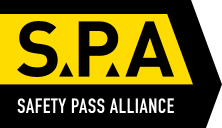Engineering firm in court after worker loses tip of finger
- Date:
- 11 December 2014
A Moray engineering firm has been fined for safety failings after a worker severed the tip of his finger on a lathe.
Darren Wiseman, 31, was working as a machinist at Standfast Precision Engineering Ltd’s Inverfiddich workshop in Craigellachie, Aberlour, when the incident happened on 3 May 2013.
Elgin Sheriff Court was told today (11 Dec) that Mr Wiseman was carrying out finishing operations on a component. He had opened the guard on the lathe and was handfinishing the job with a piece of emery tape when his right forefinger caught on the thread of the component, which was rotating at high speed. As he pulled himself free his right hand forefinger was severed at the top knuckle joint.
Mr Wiseman’s finger has healed well and he has returned to work for the company.
Standfast Precision Engineering Ltd was prosecuted after a Health and Safety Executive (HSE) investigation found that more could and should have been done to prevent access to dangerous moving machinery parts.
The chuck and spindle of the machine are provided with a guard that is interlocked to prevent access to the danger area while the machine is rotating at high speed. HSE found evidence of employees disabling the interlocks, allowing the machine to operate with the door open in order to finish work by hand. Inspectors discovered this practice had been going on for a considerable time.
The investigation also found that while the machine operators, including Mr Wiseman, had been trained there did not appear to have been any specific instruction given regarding the interlocks or finishing components. As a consequence Mr Wiseman regularly operated the machine as he had done on the day of the incident and had not been given information to suggest that method was unsafe.
Following the incident, the company repaired and reattached the interlocks on all the machines and arrangements were made to bring components up to the main workshop for finishing and for tools to hold the emery paper. Clear instructions were given about interlocks and about using holders for emery paper.
Standfast Precision Engineering Ltd, of Victoria Street, Craigellachie, Aberlour, Moray, was fined £6,000 after pleading guilty to breaching Regulations 11(1) and (2) of the Provision and Use of Work Equipment Regulations 1998.
Following the case, HSE inspector Penny Falconer, said:
“This incident was entirely preventable. Standfast Precision Engineering Ltd should have ensured that sufficient measures were in place to prevent its employees being in close proximity to dangerous parts of machines. The interlocks should have been in place at all times and additional measures could have included having a selection of holders and tools available for finishing, avoiding the need for hand-held emery paper which can result in entanglement and injuries being sustained.
“Had these been in place, then employees would not have been exposed to the risk from the dangerous parts of the machine.
“In addition, Standfast failed to provide sufficient instructions to employees to ensure they fully understood the dangers of working in close proximity to dangerous parts of the lathe, the interlocks and the systems they should have followed.
“As a consequence of these failings, Mr Wiseman suffered a painful injury.”
Notes to Editors:
-
The Health and Safety Executive (HSE) is Britain’s national regulator for workplace health and safety. It aims to reduce work-related death, injury and ill health. It does so through research, information and advice, promoting training; new or revised regulations and codes of practice, and working with local authority partners by inspection, investigation and enforcement. www.hse.gov.uk[1]
-
In Scotland the Crown Office and Procurator Fiscal Service has sole responsibility for the raising of criminal proceedings for breaches of health and safety legislation.
- Regulation 11(1) of the Provision and Use of Work Equipment Regulations 1998 states: “Every employer shall ensure that measures are taken (a) to prevent access to any dangerous part of machinery or to any rotating stock-bar; or (b) to stop the movement of any dangerous part of machinery or rotating stock-bar before any part of a person enters a danger zone.”
- Regulation 11(2) of the Provision and Use of Work Equipment Regulations 1998 states: “The measures required by paragraph (1) shall consist of (a) the provision of fixed guards enclosing every dangerous part or rotating stock-bar where and to the extent that it is practicable to do so, but where or to the extent that it is not, then (b) the provision of other guards or protection devices where and to the extent that it is practicable to do so, but where or to the extent that it is not, then (c) the provision of jigs, holders, push-sticks or similar protection appliances used in conjunction with the machinery where and to the extent that it is practicable to do so, but where or to the extent that it is not, then (d) the provision of information, instruction, training and supervision.”
-
HSE news releases are available at http://press.hse.gov.uk/



















